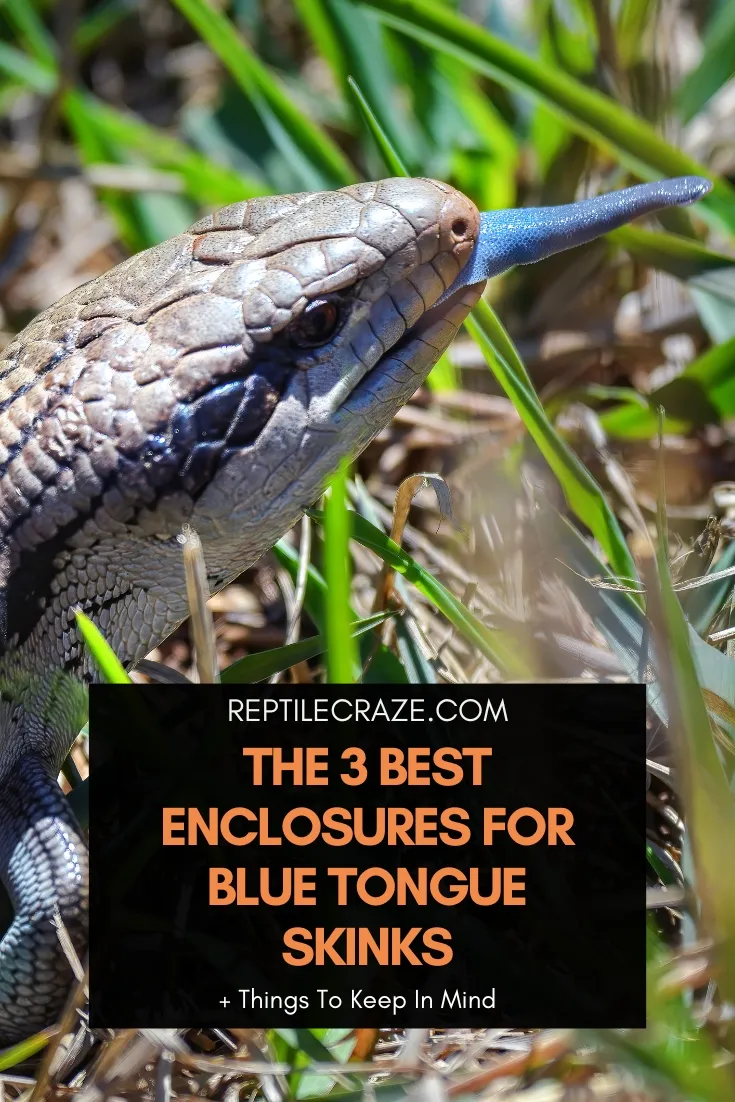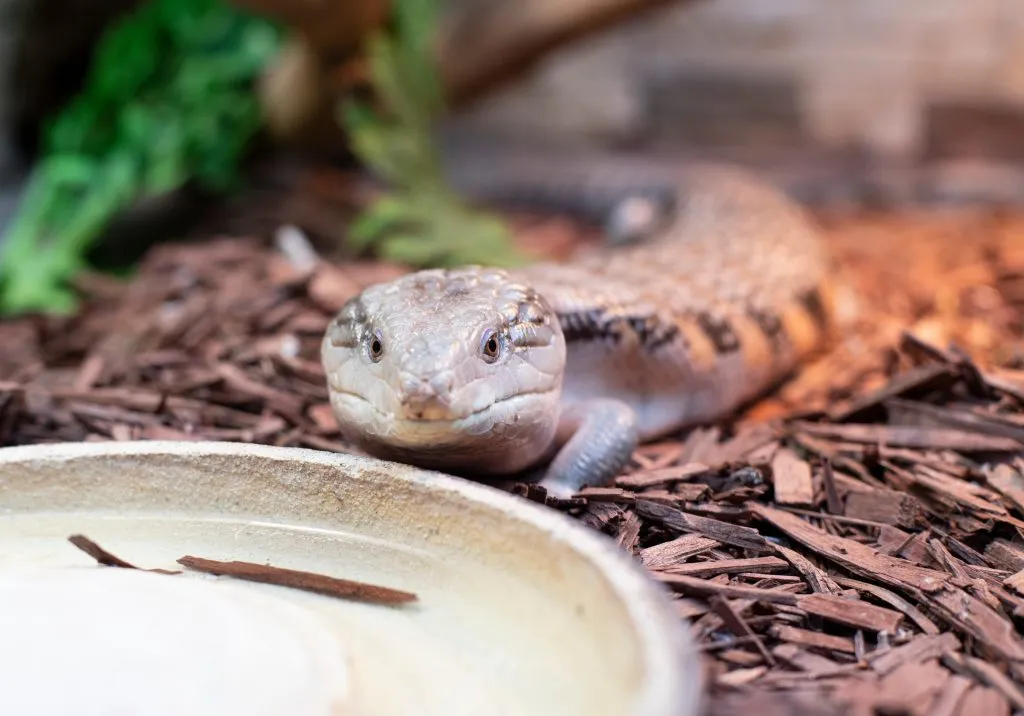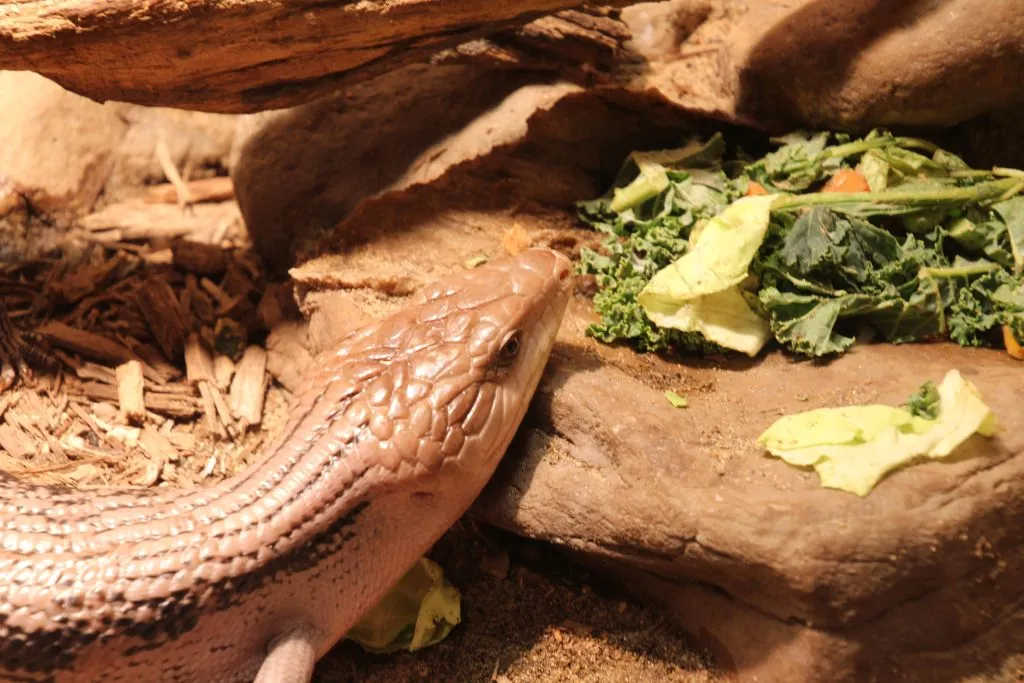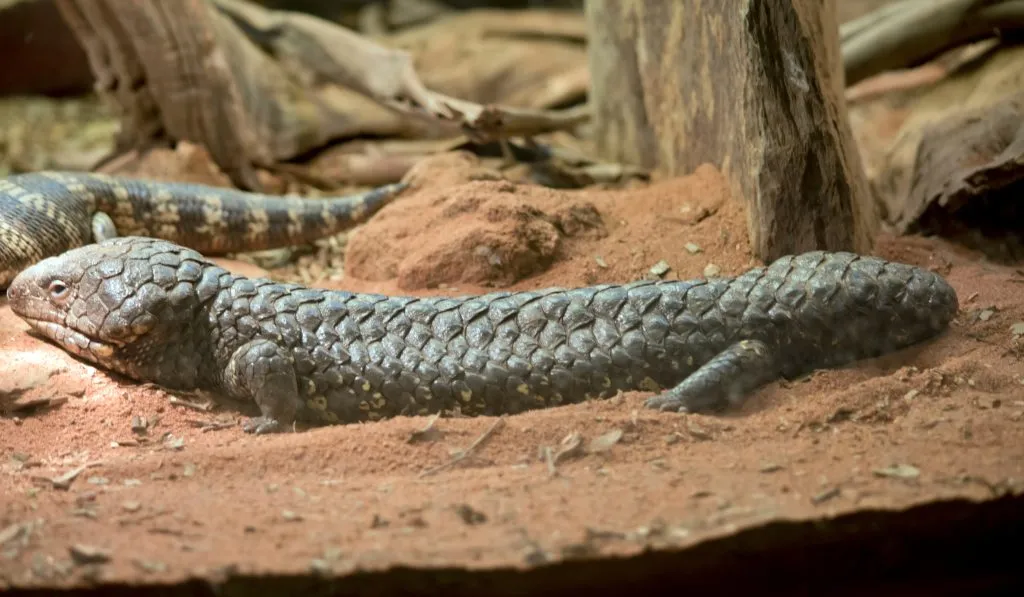
Blue tongue skinks need to have a proper enclosure in order to thrive. The best enclosure you can provide for your blue tongue skink should not only be spacious but also secure, durable, adequately ventilated, and can withstand heat.
We found and tested the best blue tongue skink enclosures, and in this article, we are going to discuss the advantages and disadvantages of getting the enclosure that fits you and your bluey. Keep on reading to find out which enclosure to get!
Table of Contents
Best Enclosures For Blue Tongue Skinks
- Best Overall: Exo Terra All Glass Terrarium
- Best For Ventilation: Repti Zoo Terrarium (67 Gallons)
- Best For Heating: Zen Habitats Enclosure (4’x2’x2′)
All of these enclosures fit well with your blue tongue skink. However, one enclosure may benefit you more compared to others if you take into account the placement of the enclosure as well as your current area.
Some areas may need more heat, while others call for more ventilation.
Why Is It Important To Have The Right Enclosure For Blue Tongue Skinks?
Blue tongue skinks may be quiet in nature but they are active reptiles that love to explore. In the wild, they enjoy exploring open areas and moving from one habitat to another whenever they deem it fit.
Of course, in captivity, we simply cannot keep buying multiple enclosures to mimic what they do in the wild, but at the very least, it is vital that we provide our blue tongue skinks with an enclosure where they can move around.
When you have the right enclosure that is spacious enough for them to explore, we also minimize the risk of obesity. Further, the right enclosure can maintain heat as well as humidity which benefits our blue tongue skinks.
Reviews Of The Best Enclosures For Blue Tongue Skinks
Let us have a closer look at our recommended enclosures.
1. Exo Terra All Glass Terrarium
The Exo Terra Tank can be purchased in various sizes.
We recommend getting the Exo Terra All Glass Terrarium due to its size that can accommodate a blue tongue skink.
This terrarium comes with everything you need and does not require a lot of set up which is perfect for beginner blue tongue skink owners.
In our full review, you will see that it has a full-screen top that offers ventilation and enables the absorption of UVB.
What is so special about Exo Terra terrariums is that they already have built-in inlets for multiple installations of accessories.
At the bottom, you also have a designated place to put an under-tank heater. Further, it has more than enough space for you to put a thick layer of the substrate.
Pros
- No need to assemble
- It has fittings for certain accessories (cables, lights, etc.)
- Affordable compared to other enclosures
- Durable
- Made of high-quality materials
- Secure (even small feeder insects cannot escape)
Cons
- The background that it comes with looks fake
- The background may also melt when exposed to extreme heat
- You cannot stack this with other terrariums
2. Repti Zoo Terrarium
The Repti Zoo Reptile Glass Terrarium can be the forever home of your blue tongue skink, especially since it can hold 75 gallons.
With this size, your blue tongue skink has more than enough room to explore its surroundings, and you can also put in several hides and decorations.
At the bottom, it has a raised frame, so you can install an under-tank heater that doesn’t touch the surface below the
It is also great if you need extra ventilation as both of its sides have partial window meshes which not only help with airflow but humidity as well.
Additionally, it has a knob where you can place tubings and wires. All of its components also have a lock feature, so your blue tongue skink is secure inside the enclosure.
Pros
- Design is great for ventilation
- Made of high-quality glass
- Durable
- Has many safety locks
Cons
- Needs a lot of assembling (comes with step-by-step instructions)
- You cannot switch the side meshes and side glasses
- Does not come with a background
3. Zen Habitats Reptile Enclosure
The Zen Habitats 4’x2’x2′ Reptile Enclosure has a
These panels are not only beneficial in terms of maintaining humidity and preserving heat, but it also prevents your blue tongue skink from seeing its reflection.
As they are territorial reptiles, seeing their reflection can trigger a defensive response.
Its doors are different from the other enclosures we recommended as it has sliding doors. These doors can also be removed. It also has support bars where you can place your lighting and heat equipment.
Pros
- Very spacious
- Durable
- Panels help with heat and humidity
- Easy to assemble
Cons
- Acrylic doors can get scratched easily
- Needs a large space
- Does not come with slots for tubings or wiring
What Tank Size Do Blue Tongue Skinks Need?

As we have mentioned earlier, blue tongue skinks are active and they love to explore their surroundings. Therefore, they need to be housed in at least a 40-50
A young blue tongue skink can also be housed in a 40-gallon
However, it is ideal to house it first in a 10-20
How To Clean A Blue Tongue Skink Tank ?

Daily Cleaning
A blue tongue skink
Weekly Cleaning
Once a week, you can take out your blue tongue skink and put it in a wide container (with air holes) so you can thoroughly clean the substrate, glass windows, and panels of the enclosure.
Moving your blue tongue skink also ensures that it will not be exposed to cleaning chemicals no matter how safe and natural it may be.
Scour the substrate for dried poop or even dead bugs, and remove and replace the substrate that already has poop particles. Wipe the glass panels with a cloth.
You can use the water-vinegar or water-hydrogen peroxide solution we mentioned earlier, or you can use a cleaning agent like this one.
Tip. Also read our guide on the best substrates for blue tongue skink tanks here!
Monthly Cleaning
Make sure to remove your blue tongue skink from the enclosure and put it in a separate container.
This is the time to remove all of the accessories from the enclosure and disinfect it with your chosen solution. Leave the solution for 30 minutes and rinse them thoroughly.
You can also wipe your attachments with a disinfecting solution. Be careful to not hit any bulbs or wires.
Quarterly Cleaning
This is the time to remove everything from the enclosure. You can disassemble the enclosure and wash its separate parts. Make sure that you dry them completely and do not leave any residue.
You also have to change your substrate for fresh ones. Depending on what substrate you have, you may opt to bake it first before placing it inside the enclosure to properly disinfect it.
Check your lighting and heating components if they are still producing the proper output. For UVB lighting, you can measure the output by using this.
Tip: Wanna put some plants into the blue tongue skink
tank ? We show you what plants are perfect for that here!
Can Blue Tongue Skinks Be Housed Together?

It is not ideal to house blue tongue skinks together as they are solitary and territorial reptiles.
However, there are instances where this could work especially when you house a male and female blue tongue skink together for the purpose of breeding.
In this case, the male blue tongue skink will tolerate the presence of the female. Depending on their personality, they can be housed together permanently, but you should always be on the lookout for possible fights, just to be sure.
On the other hand, it is not a good idea to house two male blue tongue skinks in one enclosure. They will surely fight each other (even to the death) for territory.
Some owners have claimed that this is possible, especially when they are housed together at a young age, but this is still a huge risk.
The case is different when housing two female blue tongue skinks. The females are not as territorial compared to their male counterparts.
However, they can still fight over
Can Blue Tongue Skinks Live With Other Reptiles?
You should never house a blue tongue skink with a different reptile. Even if it is a smaller reptile like a leopard gecko or a green anole.
There is a huge chance that they will fight, which can lead to serious injuries or even death.
The same goes for housing a similarly sized reptile with a blue tongue skink, like a bearded dragon. Both reptiles are territorial, thus they will fight with each other even before you have the chance to close the enclosure doors.
Final Thoughts
It is of utmost importance to find the right enclosure for your blue tongue skink. You need to consider your area, the space that you have, and also if the enclosure can accommodate the needs of your bluey.
With our recommended enclosures, you do not need to look any further as they not only meet the enclosure requirements of blue tongue skinks, but they also have the capacity to enrich their lives.
- Enchi Ball Python: A Unique and Stunning Morph of Python regius - March 27, 2025
- Emerald Tree Monitor: The Enigmatic Green Guardian of the Rainforest - March 26, 2025
- The Egyptian Cobra (Naja haje): A Fascinating Serpent - March 25, 2025






